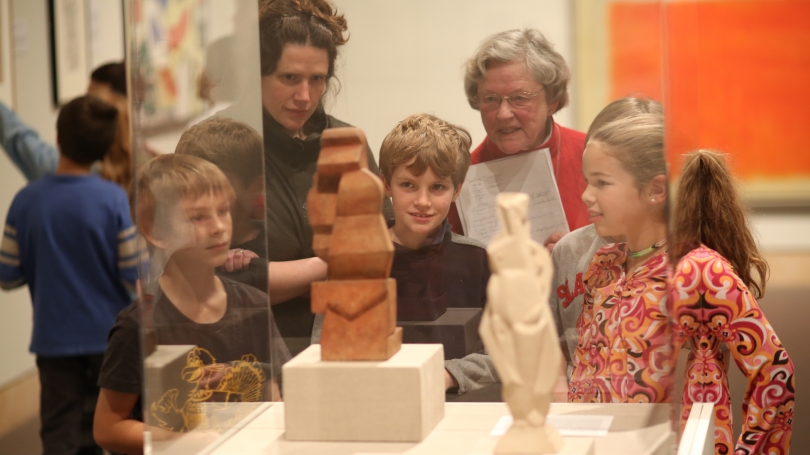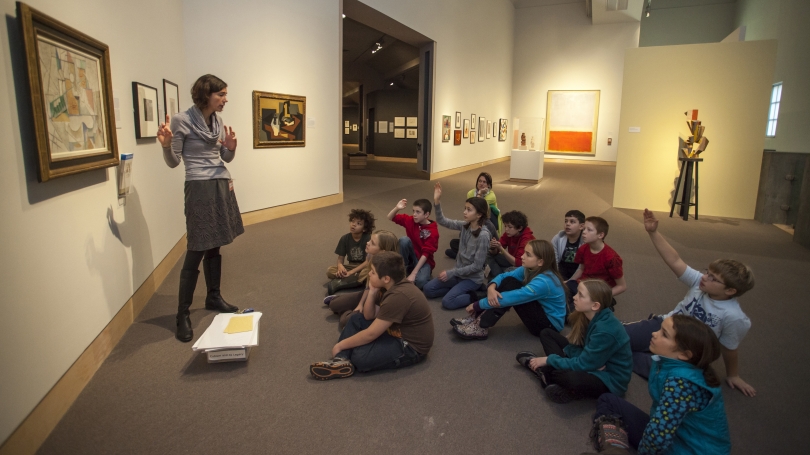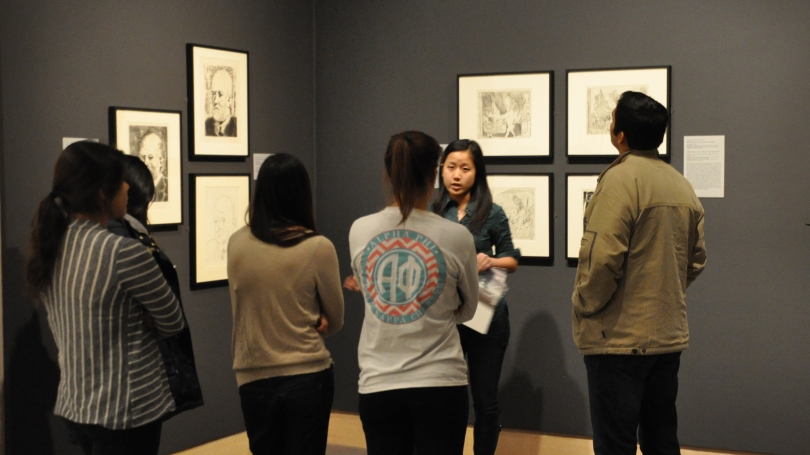Hood Museum of Art Revisits Influential Picasso Print Series alongside the Works That Inspired It
Recognized as one of the most innovative and influential artists of the twentieth century, Pablo Picasso (1881–1973) was at his most ferociously inventive between 1930 and 1937, when he created a dazzling series of etchings that are known today as the Vollard Suite. The Hood Museum of Art at Dartmouth College, one of the few museums in the world to own the complete series, is delighted to present the entire Vollard Suite in the upstairs galleries from August 17 to December 20, 2013, with an opening celebration scheduled for Wednesday, October 2nd, at 5:30 P.M.
"The Vollard Suite etchings are among the most extraordinary prints ever created and reveal the Spanish artist's mastery of the printmaking process," explained Michael Taylor, the Director of the Hood Museum of Art. "The Vollard Suite functions as a visual diary of the artist's creative thinking and preoccupations during a pivotal moment in his career. These works illustrate the two worlds to which Picasso owed allegiance at this time, namely the harmony and order of classical art and the surrealist world of dreams and the imagination."
Named after Ambroise Vollard, the famed French art dealer who gave Picasso his first exhibition in Paris in 1901, these etchings enter into a fascinating dialogue with surrealism and the art of the past. The exhibition will showcase the one hundred prints that make up this celebrated edition, alongside works by Rembrandt and Goya that inspired Picasso during their making, including Goya's magnificent, rarely seen series of four Bulls of Bordeaux prints.
The dominant motif of the Vollard Suite is the sculptor in his studio, a theme that had biographical overtones for the artist, who in 1932 established a sculpture workshop in the stables of the Château du Boisgeloup, situated about forty-five miles northwest of Paris. Many of these etchings were inspired by the sculptures he completed at his country house between 1932 and 1934, which present an idealized image of Picasso's studio life. The artist appears in the guise of a classical hero—bearded, nude, and crowned with an ivy wreath—often accompanied by a beautiful young girl who resembles Picasso's lover, Marie-Thérèse Walter, as they relax together and gaze at his recent sculptural creations, including a composite furniture-figure inspired by the surrealist assemblages of fellow Spanish artists Salvador Dalí and Joan Miró.
Another important theme is that of the Minotaur, the threatening half-man, half-bull from Greek mythology. The remarkable images of the Minotaur in the Vollard Suite build upon Picasso's earlier iconography of the bullfight to create a rich, personal, and political allegory. The four prints representing a pitiful, sightless, and impotent Minotaur guided by a young girl holding flowers or a dove are the most anguished and moving works in the entire Vollard Suite. Redolent of tragedy and suffering, they were informed by the darkening political situation in Europe during the 1930s, as well as Picasso's fear of blindness, which haunted him from his earliest days as an artist. The exhibition will also include the final and most important state of Picasso's 1935 etching Minotauromachy, on loan from the Philadelphia Museum of Art, which has long been regarded as the most important of all his graphic works and arguably the greatest print made in the twentieth century. In this remarkable work, Picasso portrayed, with great tenderness and empathy, the bison-headed creature as a helpless, blind figure who is being led by a young girl holding a candle. Picasso originally intended this print to be part of the Vollard Suite, but it was determined by Ambroise Vollard to be too large for the series.
At the same time as Picasso: The Vollard Suite, the Hood will also present the complementary exhibition Cubism and Its Legacy. In the first few decades of the twentieth century, avant-garde artists sought to challenge traditional notions about pictorial representation by creating art that responded to the rapidly changing modern world that surrounded them. The most far-reaching and radical of these artistic movements was cubism, developed between 1908 and 1914 by Pablo Picasso and Georges Braque. Their artistic collaboration produced works that defied the Renaissance convention that painting should represent an illusionistic window into the world. Instead, cubism shattered preconceived notions about vision, asserted the flatness of the picture plane and the materiality of paint, and presented subjects from various perspectives and planes at the same time. Cubism and Its Legacy, drawn from the Hood Museum of Art's extensive collection of modern and contemporary art, presents the vast range of work made possible by the redefinition of art that followed cubism, starting with some of the earliest experimental works by Picasso and Braque themselves.
Picasso: The Vollard Suite was organized by the Hood Museum of Art and made possible by Claire Foerster and Daniel Bernstein, Dartmouth College Class of 1987, the Marie-Louise and Samuel R. Rosenthal Fund, the Ray Winfield Smith 1918 Fund, and the Bernard R. Siskind 1955 Fund. Cubism and Its Legacy was organized by the Hood Museum of Art and made possible by the Marie-Louise and Samuel R. Rosenthal Fund, the Ray Winfield Smith 1918 Fund, and the Bernard R. Siskind 1955 Fund.
Related Exhibitions
Related Stories
- Picasso: The Vollard Suite
- Recent Acquisitions: Pablo Picasso, Still Life with a Bottle of Marc, 1911
- Recent Acquisitions: Suzy Frelinghuysen, Cubist Collage #7, about 1936


